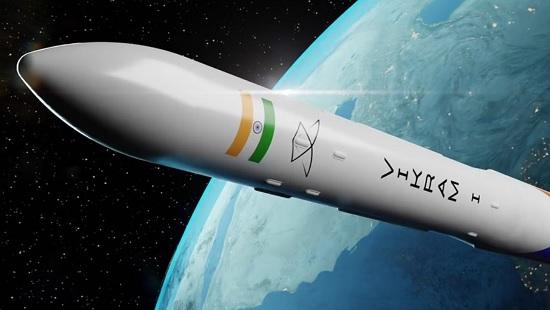23 Nov 2022 - {{hitsCtrl.values.hits}}

Three years ago, if you walked up to a space enthusiast and told them that a private space company would launch a rocket from an Isro facility in the near future, they would probably laugh at you and tell you that your space prognostication would never take off, let alone rockets.
Fast forward to the present – Skyroot Aerospace, a space startup based in Hyderabad, conducted the first test of its Vikram-S rocket from the Satish Dhawan Space Centre yesterday. Soon to follow is AgniKul Cosmos, based out of Chennai, who will launch their first rocket by the end of the year. Both of the rockets are tech demonstrators. This is a milestone for India and its space sector, as less than three years ago, one could not fathom that these small startups would have the freedom and support to achieve their ambitions.
Small is beautiful
Small rockets akin to those built by Skyroot and AgniKul open up the opportunity to gradually increase India’s launch capacity.
● Currently, Isro manages to launch less than ten rockets each year.
● India must hit double-digit launches each year to stay competitive with its peers and use its launch capability to place both commercial and government payloads into orbit.
● The beneϐits of small rockets are well-known. They allow light payloads (weighing 500 kg or less) to be placed precisely in preferred orbits rather than share rides with larger payloads and be placed in less optimal orbits.
● More importantly, the production of small launch vehicles can increase over time, allowing them to be launched quickly.
● If India’s private sector succeeds in delivering consistent launch services, then India’s space institutions can take advantage of the capability to launch payloads on short notice.
The advantage of rapid launch capabilities
A decade ago, rapid and tactical space launch capabilities were considered extremely difficult to acquire
due to the high costs of constructing rockets. They are now a reality thanks to several innovations, such
as 3D printing of components and carbon-fibre body construction. The miniaturisation of satellite
capabilities has also made it possible to pack more functionality into small satellites.
The primary use case for rapid launch is in the military. As space assets have become more prominent in
the armed forces, they also become prime targets for an adversary. Consider the following example.
During a conflict with an adversary, India’s communications and reconnaissance asset functions might be
disrupted or destroyed by an adversary’s offensive cyberattacks, kinetic kill capabilities or directed
energy weapons. This would leave one or more of India’s capabilities dysfunctional, requiring
replacement. Assuming that redundancies would be absent, replenishing damaged or dead satellites will
be essential to maintain military effectiveness. In such cases, accessing reliable rockets launched on short
notice becomes a strategic necessity. Other use cases could include the deployment of small satellites for
surveillance of borders during a crisis. Similarly, the country’s intelligence agencies might also find it
helpful to have inspector satellites in orbit to verify suspicious activities by other actors in space.
● At present Isro’s Small Satellite Launch Vehicle (SSLV) is the only rocket in the small launch vehicle
range capable of delivering a payload of up to 500 kg into orbit that is at an advanced stage of becoming
operational.
● But its tech demonstration mission earlier this year failed.
● SSLV is a three-stage rocket powered by solid rocket motors. But having a solid propellant rocket for
quick response comes with limitations.
● First, solid propellant rockets require climatecontrolled storage facilities to ensure that the propellant
does not develop cracks over time.
● Second, solid-fuel rockets are prone to cause higher vibrations than their liquid-fuelled counterparts,
and therefore, they might not be suitable for carrying payloads with sensitive instruments.
● Thus, the success of private launch providers in India will lie in moving to liquid-fuelled rockets built
using innovative manufacturing techniques suited for on-demand production.
Planning for the long term
The Indian National Space Promotion and Authorisation Centre (IN-SPACe) was set up in 2020 to
function as an independent body that overlooks the regulation of all space activities in the country. Chief
among the regulatory activities performed by IN-SPACe is to authorise private space launches. The
Defence Space Agency must work closely with IN-SPACe to create a separate track for launching defence
payloads.
Using commercial services for launching defence payloads is not a new phenomenon. In fact, it is
common practice in the US for the department of defence to award commercial contracts for defence
missions. The US Space Force is currently awarding contacts for performing “responsive space” missions.
Acquiring similar capabilities might be easier in India as the IN-SPACe structure is more conducive to publicprivate cooperation.
India’s space sector has come a long way in the past three years. But it has a long way to go. Tapping into the private sector’s capacity is imperative in making India a thriving space power, and GoI must remain consistent with its current policy to achieve its goals. (Courtesy Times of India)
08 Jan 2025 53 minute ago
07 Jan 2025 8 hours ago
07 Jan 2025 8 hours ago
07 Jan 2025 9 hours ago
07 Jan 2025 07 Jan 2025